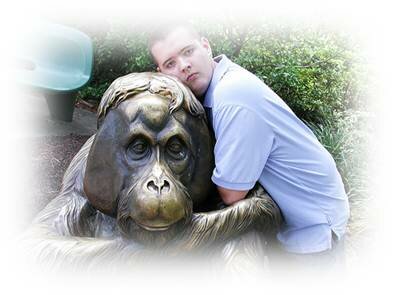Autism Types

Several known autism types and associated disorders are generally characterized by impaired social interaction and communication skills, and a limited range of activities and interests.
The pervasive developmental disorders, or autism spectrum disorders, comprise autism types ranging from a severe form, called autistic disorder, to a milder form called Asperger Syndrome.
Not until the middle of the twentieth century was there a name for a disorder that now appears to affect an estimated 3.4 every 1,000 children ages 3-10, a disorder that causes disruption in families and unfulfilled lives for many children.
In 1943 Dr. Leo Kanner of the Johns Hopkins Hospital studied a group of 11 children and introduced the label early infantile autism into the English language also providing characteristics for autism disorders.
At the same time a German scientist, Dr. Hans Asperger, described a milder form of the disorder that became known as Asperger syndrome.
The most recent characteristics for Autism Spectrum Disorders, autism types and diagnostic criteria are provided by The American Psychiatric Association Diagnostic and Statistical Manual, Fourth Edition, (DSM-IV-TR).
Until 1994, autism was classified as a disorder without reference to pervasive developmental disorders.
Currently several Autism types and characteristics for Autism Spectrum Disorders are viewed as a spectrum disorders that is under the rubric of pervasive developmental disorders, which includes autism types and disorders that cause severe deficits early in a childs development.
Pervasive Developmental Disorders
Pervasive Developmental Disorders (PDD) include:
- Autistic Disorder
- Retts Disorder
- Aspergers Disorder
- Childhood Disintegrative Disorder
- Pervasive Developmental Disorder not Otherwise Specified (including Atypical Autism)
Those affected may avoid making eye contact and lack the ability to read faces for signs of emotion or other cues. Children with ASD typically do not engage in social play or games with their peers. Unusual behaviors such as rocking, hand-flapping or even self-injurious behavior may be present in some cases. Individuals with one of mentioned autism types have unusual social, communicative and behavioral development and may have abnormalities in cognitive functioning, learning, attention and sensory processing.
If a child has symptoms of autism, but does not meet the specific criteria for either, the diagnosis is called Pervasive Developmental Disorder Not Otherwise Specified (PDD-NOS). Comparing to other autism types, a rare and very severe disorders that are included in the autism spectrum disorders are Rett Syndrome and Childhood Disintegrative Disorder.
Rett Syndrome
Rett syndrome is relatively rare, affecting almost exclusively females, one out of 10,000 to 15,000. After a period of normal development, sometime between 6 and 18 months, autism-like symptoms begin to appear. The little girls mental and social development regressesshe no longer responds to her parents and pulls away from any social contact. If she has been talking, she stops; she cannot control her feet; she wrings her hands.
Some of the problems associated with Rett syndrome can be treated. Physical, occupational, and speech therapy can help with problems of coordination, movement, and speech. Scientists sponsored by the National Institute of Child Health and Human Development have discovered that a mutation in the sequence of a single gene can cause Rett syndrome.
This discovery may help doctors slow or stop the progress of the syndrome. It may also lead to methods of screening for Rett syndrome, thus enabling doctors to start treating these children much sooner, and improving the quality of life these children experience.
Childhood Disintegrative Disorder
Very few children who have an autism spectrum disorder (ASD) diagnosis meet the criteria for childhood disintegrative disorder (CDD).
An estimate based on four surveys of ASD found fewer than 2 children per 100,000 with ASD could be classified as having CDD.
This suggests that CDD is a very rare form of ASD. It has a strong male preponderance.
Symptoms may appear by age 2, but the average age of onset is between 3 and 4 years. Until this time, the child has age-appropriate skills in communication and social relationships.
The long period of normal development before regression helps differentiate CDD from Rett syndrome.
The loss of such skills as vocabulary are more dramatic in CDD than they are in classical autism.
The diagnosis requires extensive and pronounced losses involving motor, language, and social skills. CDD is also accompanied by loss of bowel and bladder control and oftentimes seizures and a very low IQ.

Learn more about Characteristics For Autism Spectrum Disorders, Autism And Vaccinations, Early Symptoms of Autism, a rationale behind Autism treatments...











